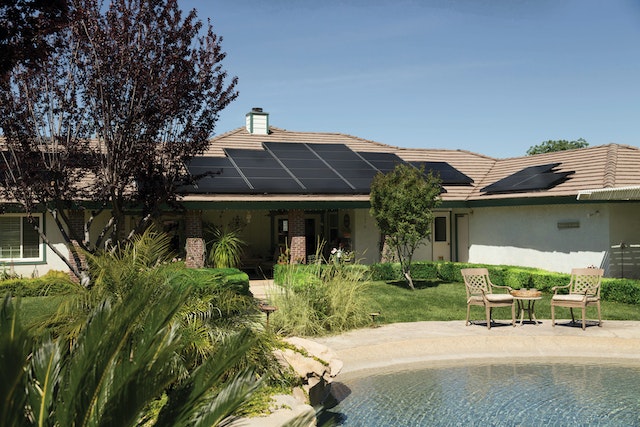Technology has completely changed the way we live to the extent that we can’t imagine how life would be without it. Computers, automobiles, and smartphones have become integral to our day-to-day lives, not as luxuries but as tools we use to get things done. However, there are adverse side effects that technology is causing to our environment that we all need to be aware of.
In today’s article, we will discuss the negative impacts of technology and what we can do about it to save our environment.
How technology is impacting nature
More emissions

Studies show that the carbon emissions today are over 12 times than 100 years ago. The increase in these emissions is mainly due to the advancements in technologies, mainly in the transportation and manufacturing sectors. The need to manufacture more fancy products and technological devices has drastically increased the levels of manufacturing in the last couple of decades, leading to more emissions.
For instance, Apple and Samsung combined sell over 500 million phones, which is an insane amount. But remember, the average smartphone generates an average of 85 kilograms in emissions in its first year of use. 95% of these emissions are in the manufacturing process. These emissions would all not exist if smartphones were not invented.
In the auto industry, over 66.7 million cars were shipped in 2021. Most of these cars are gas cars, which emit around 4.6 metric tons of carbon dioxide annually. EVs may not directly emit CO2 during use, but their manufacturing process emits greenhouse gases more than gas cars. So, in the short term, they all emit greenhouse gases into the atmosphere.
Besides cars and phones, manufacturing and usage of other consumer technology products such as computers, gaming consoles, and TVs also produce massive amounts of emissions that are seriously damaging our environment.
There is a need for the manufacturers of these phones, cars, computers and other tech products to make changes in their processes in order to lower the emission rates. Otherwise, the effects will be unbearable in the future if the relevant stakeholders don’t take serious action on what is going on.
More e-waste

One of the disadvantages of technology products like smartphones is their short life span. Most people upgrade their smartphones at least once in two or three years. Studies show that Americans trash over 151 million phones every year. All this is e-waste that damages our soil and generates greenhouse gases responsible for global warming.
People upgrade their smartphones and computers more often than product categories due to the constant innovations that these products come with. Let’s all face it, most 10-year-old computers are still functional, and the main reason we don’t want to use them is the slow speeds, old design and probably poor battery life. The constant innovation in the tech industry makes products made a few years ago look obsolete.
Products in other categories, such as furniture or kitchenware, are often replaced when they are too old to be functional. No one plans to upgrade their saucepans or cups every after two years. The only time you plan to buy new cups and saucepans is when you really feel the need for more, or probably the ones at home have worn out.
Destruction of natural resources

Manufacturing technology products requires raw materials, including metals, plastics, water, wood, etc. Most of these raw materials are obtained by destroying natural resources like forests and water bodies. Even the popular tech companies like Apple that are trying to be as green as possible only use 20% of recycled materials for their products.
The manufacturing facilities for these tech products also need huge chunks of land in urban or semi-urban areas that have enough labor. This often leads to the destruction of natural more natural resources like wetlands, forests, and green vegetation in order to avail the massive sizes of land that these facilities need.
Destruction of natural habitats for animals and insects is another indirect effect that comes with damaging natural resources. Some of these animals and insects play a crucial role in our ecosystem, so destroying them could create some imbalances in nature.
More unnecessary travel

Transportation contributes over 25% of the global carbon footprint. The presence of high-tech automobiles makes it pretty easy to move from one place to another, which leads to more emissions since gas cars are still the most dominant on our roads. Cars and trains are getting much faster as technology continues to get better.
We now have high-speed trains that can attain maximum speeds of up to 200KM/h. These speeds make it convenient for people to commute longer distances to work instead of getting jobs within their neighborhood. Remember, the more distance we move, the more we increase our carbon footprint.
Back then, before the invention of automobiles, horses were the primary means of transport if someone wanted to travel several miles away from home. Emissions due to transportation in that era were close to zero. This has all changed in the last couple of decades, thanks to several advancements in transportation technologies.
Excess usage of energy

If you look around your house, you will notice that most of the appliances and gadgets you are using have all been invented in the last two or three decades. These appliances and devices need several kilowatts of power to operate, which translates into more carbon emissions because most of us use energy from unclean sources.
The average household energy consumption has been gradually increasing year over year mainly because people are buying more equipment and gadgets to make life in their homes much easier and more fun. All this results in more carbon emissions that eventually lead to global warming and other adverse effects, such as prolonged droughts.
In addition to household energy, the energy consumed by the manufacturing industry has also been growing over the years. Data centers that are responsible for storing data and housing some of the major platforms we use every day also consume a lot of energy. Recent reports show that data centers use about 1 to 2% of the world’s electricity.
Other technology inventions, including cryptocurrencies and blockchain platforms, need a lot of computational energy. For instance, the energy required to run the bitcoin blockchain is over 150 terawatt-hours of electricity annually, more than what a country like Argentina, which has more than 45 million people, needs in the whole year.
All the inventions that have increased our energy consumption are really fundamental to our daily lives. However, we need to assess if the environmental cost we are paying is worth the benefits that some of these technologies bring to us.
Easy Ways To Live More Sustainably
Using recycled materials

One of the first things that manufacturers of tech products need to embrace is using recycled materials. The 150 million phones Americans trash every year should be recycled because most of their parts can be recycled and used to make new phones. For instance, some of the components in old batteries can be reused to make new batteries.
The good news is that most of the major tech companies, including Samsung, Apple, and Tesla, are encouraging their users to trade in their old phones or parts in exchange for credits that can be used while purchasing new products. Consumers also need to play their role by using the various recycling opportunities at their disposal.
Shift to renewable energy

Many of the big tech companies are embracing the shift to renewable energy in order to reduce their carbon footprint. However, this movement is not as popular in the smaller companies that still find it more expensive to shift to renewable energy. The companies that are embracing renewable energy usually build their infrastructure, which includes wind turbines or solar plants.
Small businesses that don’t have the resources to build their renewable energy infrastructure often have to continue relying on the energy from the grid, which is often unclean. If we are to fully transition to renewable energy, governments and other major players in energy generation need to add more green energy to the national grids.
The renewable energy generated annually worldwide is still below 30% of the total energy. That means over 70% of the energy we consume is still unclean. The good news is that we see year-over-year increments in the percentage of renewable energy produced. If we can maintain the pace, we will surely reach a time when 100% of the power generated globally is from renewable technologies.
Hold on to the gadget you have

As a consumer, one of the best things you can do for the environment is to hold a little on that phone or computer that you currently have. I know companies release new versions of their products almost every year. However, most of the improvements made (especially in recent years) are not substantial to justify upgrading your device every year.
Computing power has reached a point where annual improvements don’t make a difference in the day-to-day experience of the devices. Most people can only notice the differences in performance if they upgrade from devices that are about 3 to 5 years old. For instance, if you are currently using an iPhone X, you will likely notice a significant performance difference if you upgrade to the iPhone 13 or the upcoming iPhone 14.
Buying a new device should only be done when your current one is no longer usable, probably due to damage or wear and tear. It is also important to prioritize buying products with a reputation for durability and repairability. So, instead of upgrading to the newer models, you simply upgrade a few components to boost their performance.
Travel Smartly (Local &

We all know that transportation is one of the major sources of greenhouse gases. For personal travel, consider swapping one foreign trips with someplace half the distance, or even local. For business travel, not every business meeting requires you to be physically present. The good news is that we now have platforms like Zoom, MS Teams, and Google Meet with robust communication tools, eliminating frequent physical meetings.
If we all minimize the distances we move every year, the emissions generated from transport will significantly be decreased.
Embrace zero emission transport means

If your workplace or grocery store is a few miles away, it is best to ride there with a bike instead of using your gas car. Also, if you can afford it, buy an EV. Their overall lifecycle emissions are way lower than gas cars. EVs will produce even fewer emissions if you use renewable energy sources to charge them.
Companies in the transportation and distribution sectors should also embrace the shift to EVs. Amazon has already taken the lead by ordering 100,000 EVs from Rivian that are all expected to be on the road by 2040.
Final thoughts
We have looked at most of the adverse side effects technology has created on the environment in the last couple of years. Most of these are related to more energy consumption and the generation of waste that pollutes our water, soil, and air. The fact that we can’t do away with technology means we must find ways of using it sustainably. This requires everyone responsible to embrace some of the changes we discussed in the last section of the article.



